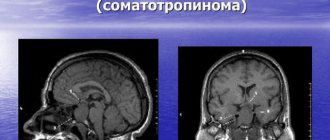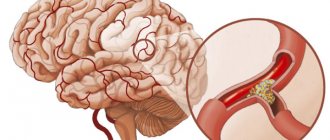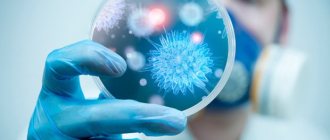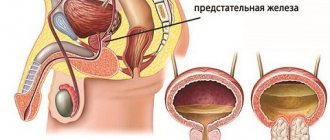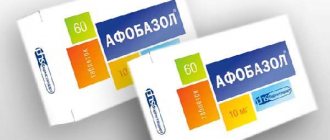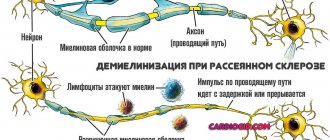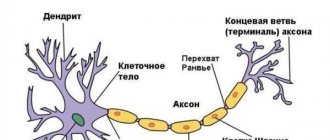Among vascular diseases, the most frequently diagnosed are varicose veins, atherosclerosis, coronary heart disease, thrombosis, hypertension, and strokes. Vascular lesions are accompanied by irregular heart rhythm, dizziness, a feeling of coldness in the extremities, redness and changes in the structure of the skin over the inflamed vein. At the first symptoms, it is recommended to consult a doctor who will make the correct diagnosis and prescribe treatment.
Why do vascular pathologies occur?
Among the most common causes of vascular diseases, doctors name the following unfavorable factors:
- bad habits;
- wearing uncomfortable shoes;
- congenital vascular pathologies;
- dysfunction of parts of the brain that regulate blood flow;
- endocrine diseases;
- systemic functional disorders (intestines, heart);
- thinning of vascular walls;
- poor nutrition;
- obesity;
- infectious diseases;
- deterioration of flexibility and elasticity of veins and arteries.
The first signs of vascular problems
Problems with blood vessels can be recognized even when they can be easily eliminated or alleviated with the help of simple preventive measures. The following signs should be considered alarming:
Poor heat tolerance.
- Frequent dizziness.
- Migraine, headaches.
- Darkening or “floaters” before the eyes.
- Fainting.
- Impaired coordination of movements when a person suddenly changes position.
- Cold fingers and toes.
- Meteosensitivity.
- Palpitations.
- Noise in ears.
- Weakness, fatigue.
- Insomnia.
These symptoms are very nonspecific and can appear in a variety of diseases. But sometimes signs of vascular disorders occur regularly, for no apparent reason. Weak vessels cannot respond correctly to external and internal stimuli, increase their tone or relax in time. Due to an inadequate response of the vascular walls to changes in the surrounding and internal environment, all of the above symptoms appear.
With orthostatic hypotension, a sharp decrease in blood pressure occurs when the body position changes from horizontal to vertical. A characteristic of this condition is that low blood pressure is observed at a normal heart rate.
Under the influence of various stimuli, reflex responses occur in the body, for example, with hypersensitivity of the carotid sinus, a sharp turn of the head or wearing a tight tie can cause fainting or dizziness.
In the presence of vascular abnormalities (malformations, aneurysms and vascular stenoses), the so-called “steal syndrome” may occur, which results in a drop in blood pressure in distant sections of the arteries.
All these vascular problems have similar clinical manifestations, but completely different causes and, accordingly, treatment.
If a person develops vascular problems, it is necessary to consult a doctor who will determine how dangerous they are. Therapists, cardiologists and neurologists will help identify vascular problems in the early stages. In case of severe vascular pathologies, you should contact a vascular surgeon or phlebologist. If symptoms of vascular disorders appear after an injury, you must contact a traumatologist.
Vascular diseases: types and symptoms
Phlebeurysm
Varicose veins can affect the veins in the arms.
Most often, the disease affects the vessels of the lower extremities, but can also be diagnosed on the genitals, rectum, arms, and esophagus. On the legs, pathology occurs due to a malfunction of the valves. As a result, the blood stagnates and the veins dilate. With varicose veins, tissue nutrition deteriorates and cell breakdown occurs. This contributes to the occurrence of trophic ulcers. The main symptoms of varicose veins of the legs are as follows:
- heaviness in the legs;
- feeling of numbness, burning, itching;
- redness of the skin over the affected vein;
- formation of varicose nodes;
- convulsions;
- pain when pressing;
- swelling.
Hemorrhoidal disease
With hemorrhoids, the outflow of venous blood from the rectum is disrupted, as a result of which the vessels fill with blood fluid, stretch and form nodes. The disease progresses progressively and is characterized by the following symptoms:
With pathology of the anal veins, a person feels pain during bowel movements.
- itching and burning in the anus;
- pain during bowel movements;
- the appearance of blood during or after bowel movement;
- knots falling out.
Atherosclerosis
The disease is characterized by a chronic course in which the blood vessels become denser and narrower due to the appearance of plaques. Atherosclerotic stenosis impairs blood supply to organs and provokes the appearance of blood clots. Often the disease occurs due to eating foods rich in cholesterol. Clogged and diseased vessels manifest themselves as follows:
- pain in the heart area;
- dizziness;
- memory impairment;
- headache;
- the appearance of hypertension;
- weight loss;
- pain in the limbs and back;
- fast fatiguability.
Stroke (apoplexy)
A sign of a stroke may be a sharp decrease in vision.
The disease is characterized by coronary vascular disease in the brain. The cause of a stroke is blockage of a vessel by air bubbles, separation of a blood clot, or sudden jumps in blood pressure. The pathology appears suddenly or over several days and has the following symptoms:
- decreased vision;
- Strong headache;
- speech and motor coordination disorder;
- paralysis of the entire body, face or limbs.
Hypertension
With this disease, there is a persistent increase in blood pressure. Pathological changes occur due to a large release of adrenaline into the blood. The blood vessels narrow and the heart rate increases, causing blood pressure to rise. A heart attack or heart failure may develop. Hypertension is characterized by the following symptoms:
- increased sweating;
- redness of the skin and puffiness of the face;
- swelling;
- dyspnea;
- the appearance of “floaters” before the eyes and blurred vision;
- Strong headache;
- feeling of tightness in the chest;
- nausea or vomiting.
Cardiopsychoneurosis
A sign of the presence of NCD in a person may be a feeling of coldness in the palms.
The disease occurs due to damage to arterial vessels due to neuroendocrine disorder. The occurrence of the disease is facilitated by non-compliance with the daily routine, hormonal imbalance, physical activity or lack thereof, and stress. The disease manifests itself in this way:
- mild hypertension or hypotension;
- coldness in the palms or feet;
- sweating;
- tachycardia;
- headache;
- muscle weakness;
- fast fatiguability;
- intestinal dysfunction;
- slight hyperthermia;
- loss of appetite;
- nausea.
Cardiac ischemia
A symptom of such a disease may be pain in the sternum.
IHD occurs due to insufficient oxygen supply to the myocardium due to a coronary disorder. The main cause of ischemia is the formation of atherosclerotic plaques. If plaques crack, blood clots form on their surface. Coronary artery disease is dangerous due to the development of a heart attack, in which necrosis of heart tissue occurs. The symptoms of the disease are as follows:
- severe pain behind the sternum, radiating to the left arm, shoulder blade, lower jaw;
- heart rhythm disturbance;
- dyspnea.
Venous thrombosis
With this disease, blood clots form in the cavities of blood vessels, which obstruct blood flow. Pathology can be provoked by injuries, operations, obesity, professional activities associated with pinching the vessels of the arms or legs. Thrombosis occurs suddenly and is accompanied by the following symptoms:
- severe pain in the limb;
- swelling;
- blue skin;
- coldness in the affected arm or leg;
- weakness, fever;
- chills;
- feeling of fullness in the sore limb.
Thromboembolism
The condition is life-threatening, so the victim must be urgently taken to a medical facility.
A broken blood clot can clog a vessel in the heart.
This disease occurs as a result of a blood clot breaking off and blocking the vascular lumen. Because of this, blood flow in the affected vein or artery stops, and the affected tissues die. Localization of thromboembolism - vessels of the digestive organs, brain, kidneys, heart, lower extremities. Pathology manifests itself as follows:
- loss of pulse;
- bluish skin;
- severe pain in the affected area;
- swelling;
- development of gangrene.
Peripheral vascular diseases
Most often in medical practice, experts identify the following peripheral vascular diseases:
- obliterating arteritis of the legs,
- atherosclerosis of the vessels of the lower extremities,
- varicose veins,
- thrombophlebitis.
Obliteration develops against the background of inflammation of the vessel wall. The reason for this is an autoimmune process that can be transmitted from parents to children.
Atherosclerosis and arteritis
Middle-aged men are more susceptible to pathology than others, because bad habits (smoking, alcohol) play an important role. Elderly people suffer from atherosclerosis of the lower extremities.
The symptoms of these diseases are:
- cutting pain in the calf muscles, which are rich in blood vessels,
- leg cramps,
- feet get cold even in hot weather,
- increased pain when walking or exercising,
- sores or cracks on the skin of the legs.
If you notice the first signs of such disorders, you should contact your doctor for a comprehensive diagnosis and immediately treat the problem.
Varicose veins
After a decrease in vascular tone and disruption of their fixation, varicose veins develop, which is characterized by the following symptoms:
- red mesh on the hips and ankles,
- rapid leg fatigue,
- swelling of the lower extremities,
- aching pain in the legs.
When deep veins are affected, the symptoms become more pronounced and become permanent. Patients have cyanosis of the legs and enlarged venous trunks.
Experts characterize varicose veins as a female disease, because it is caused by increased stress during pregnancy and constant wearing of high-heeled shoes. But there are also men who suffer from this disease.
Haemorrhoids
Hemorrhoids are classified as a separate subcategory of peripheral vascular diseases. It occurs due to a sedentary lifestyle, digestive problems, and intestinal obstruction. Due to the fact that hemorrhoidal veins and deep ring vessels dilate, a person develops the following abnormalities:
- pain and discomfort in the anus,
- burning sensation and itching in the perineum,
- discharge of blood during bowel movements.
Treatment of hemorrhoids consists of taking tonic medications, regular exercises, wiping the anus with special ointments and wearing compression underwear.
Treatment tactics are based on which area is affected and how deep the lesion is found. There are cases in which the patient can only be helped by surgical intervention (removal of the dilated vessel).
If varicose veins are combined with thrombophlebitis, then there is a risk of developing an infectious process. The affected area becomes red and swollen. The local temperature rises significantly, and palpation becomes painful. The localization of this disease is most often found in the superficial veins of the arms and legs.
As complications, doctors note the possibility of a blood clot breaking off, which provokes thromboembolism. Pulmonary artery thrombosis provokes infarction of the lung lobe. In the event of complete blocking of the main vessel, the patient’s immediate death occurs. That is why in these cases the prevention of thrombosis is extremely important.
Diagnosis of vascular diseases
Vascular diseases are determined by a vascular surgeon, phlebologist, angiologist or cardiologist. A preliminary diagnosis is established on the basis of anamnesis, visual examination, and the patient’s condition. For a complete clinical picture, it is recommended to undergo several procedures, such as:
- angiography;
- Doppler ultrasound of blood vessels;
- duplex scanning;
- magnetic resonance or computed tomography;
- rheography;
- phlebography;
- venography;
- echocardiography;
- cardiogram;
- rheoencephalography.
Principles of treatment
The treatment regimen is selected individually and depends on the specific diagnosis. Most vascular problems can be treated with medications, without the need for surgery. All patients, regardless of the type of vascular disorder, are also given advice on proper nutrition and other aspects of life.
Nutrition and lifestyle
Fatty foods, bad habits, a sedentary lifestyle and excess weight are the main factors that trigger pathological processes in blood vessels. Treatment with medications will not be effective if you do not follow simple rules:
- completely exclude fried and fatty foods, salty foods and sweets in large quantities from the diet;
- give up bad habits: smoking and alcohol;
- pay attention to simple physical activity, including walks in the fresh air;
- normalize sleep and wakefulness - the body needs at least 8 hours of sleep daily;
- avoid stress.
Diet and normal physical activity will allow you to gradually lose excess weight without stressing the body. Extra pounds are also one of the main causes of heart and vascular diseases.
Medicines
Medicines are prescribed individually. Patients often have to take several drugs at the same time, which belong to different pharmacological groups. To normalize blood pressure, medications are needed to control it; for varicose veins, venotonics; for high cholesterol levels, lipid-lowering medications. To monitor their effectiveness, it is necessary to periodically undergo routine examinations and monitor blood counts.
Surgical intervention
Most often, surgical treatment is necessary for thrombosis. The operation is prescribed if there is a risk of a blood clot breaking off or in case of complete blockage of the vessel with the formation of pockets. It is performed by resection of the section of the artery or vein that contains the blood clot. Modern medicine also offers less invasive techniques. They involve installing a shunt to ensure normal blood supply to the tissues.
Treatment of vascular problems is carried out after a complete diagnosis of their condition. It should be understood that the doctor’s recommendations should be followed throughout life. Failure to follow simple rules can lead to exacerbation of the disease, including after successful drug or surgical treatment.
How is the treatment carried out?
The therapeutic regimen is determined by the doctor individually, depending on the type and severity of the disease. Self-medication is prohibited. For hemorrhoids, it is recommended to use suppositories and ointments: “Relief”, “Proctosan”, “Ultraproct”, “Proctosedyl”. Varicose vascular diseases are cured with drugs to improve blood flow and strengthen the walls of blood vessels. Medications such as Phlebodia, Venoruton, Vasoket, and Detralex are prescribed. For the treatment of hypertension, medications from several pharmaceutical groups are recommended - beta blockers, diuretics, renin inhibitors, calcium channel blockers. For neurocirculatory dystonia, sedatives and adherence to a daily routine and diet are prescribed. In other cases, hospital treatment and surgery are required.
Vessels of the head and neck: causes and methods of treating pathologies with drugs and folk remedies
Unexpected, causeless attacks of pain, ringing in the ears, dizziness, forgetting important dates and events are familiar to many.
You can attribute this to increased employment, age, and past illnesses. But much more often the causes of the condition are pathologies of the blood vessels of the head and neck. There are many methods for eliminating unpleasant sensations.
Therapy is carried out with pharmaceuticals and traditional medicine.
Finally
Pathological lesions of the blood vessels of the neck and brain have long ceased to be a disease of the elderly.
A large number of stressful situations, a decrease in the quality of nutrition, and the spread of fast food are the main reasons why diseases have sharply become younger.
Timely consultation with a doctor and strict adherence to medical recommendations reduce the likelihood of patient disability. Therapy can be carried out with pharmaceutical and folk remedies.
Source: //sosud-ok.ru/sosudi/lechenie/bolezni-sosudov-golovy-i-shei-lechenie.html
Basic treatment methods
Treatment of the vessels of the head and neck is usually carried out when there are symptoms of other diseases: hypertension, atherosclerosis. A healthy lifestyle can reduce the risks associated with these dysfunctions. Physical activity reduces the likelihood of strokes by 25%, and proper nutrition and smoking cessation reduces the likelihood of strokes by another 25%. You need to restore your health from small steps: walk more, eat right, limit alcohol and stop smoking.
The main way of prevention in medicine is medication. If high blood pressure is detected, antihypertensive drugs are prescribed. Even if there are complaints about the cervical spine, pills are used to improve blood circulation or muscle relaxants to reduce spasms.
Treatment of blood vessels in the head and neck with folk remedies relies on the use of garlic for cleansing and mustard compresses. Vascular spasm mediated by muscle imbalances and stressful situations is not affected.
At home, diaphragmatic breathing is suitable for relieving the effects of stress - with the ribs expanding to the sides as you inhale. In this case, the shoulders should not rise. This type of breathing relieves the muscles and fascia of the neck and relaxes the blood vessels. To correct muscle imbalance, it is better to contact osteopaths, but avoid manipulation of the vertebrae.
People often have problems with blood vessels in the brain. The symptoms, causes and treatments for such disorders are given below.
Be carefull
The first signs of brain pathologies can be extremely varied. They are triggered by genetic defects, trauma, infections, immune disorders, vascular diseases, or benign and malignant neoplasms. Manifestations of such violations in the work of our “central control room” can be expressed in similar symptoms. For example, headaches can be caused by pathologies of the brain vessels or cancerous tumors, and nausea can be provoked by a concussion or the presence of a tumor in the brain tissue. But in any case, the symptoms of problems with the brain should not be ignored; they serve as a reason to consult a doctor and monitor your health. Only such a comprehensive approach will help you avoid the progression of severe brain diseases and all the complications that can develop with advanced pathologies.
Symptoms of atherosclerosis
Memory problems often indicate poor circulation in the head. When the lumen of blood vessels becomes narrow, blood flow to different parts of the brain is significantly reduced. This causes numerous violations. In addition to memory deterioration, patients experience hearing problems, increased fatigue, and poor coordination of movements.
Insomnia or waking up abruptly at night occurs when blood vessels in the neck and head become blocked. Fatigue in the morning, irritability and sudden changes in mood also require attention. Sugar addiction occurs when a large amount of glucose accumulates in the circulatory system. The brain regards this condition as a lack of micronutrients, carbohydrates and sweet foods.
Atherosclerosis occurs due to problems with hormones that affect the functioning of the sweat glands, the discharge becomes sticky and smells unpleasant. If you experience excessive sweating for no particular reason, you need to check the condition of the blood vessels.
A doctor should be consulted when gray hair appears in people under 40 years of age. When blood circulation deteriorates, problems arise with the synthesis of the protein responsible for coloring the skin and hair. Lack of nutrients causes early gray hair and pale skin. Cold hands, a feeling of heaviness in the limbs when they are lowered down, sometimes cramps appear, itching on the skin - all these are signs of circulatory problems.
